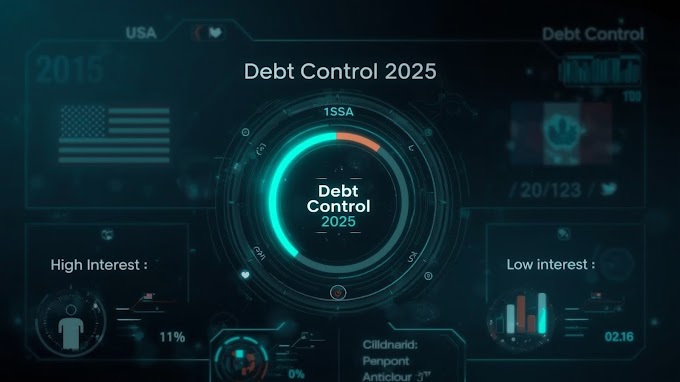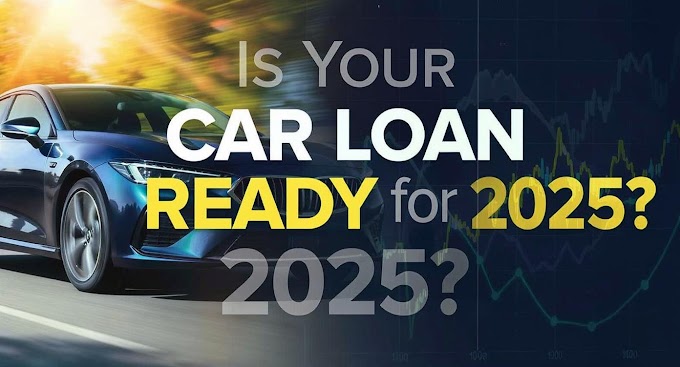
Refinance or Wait? Your Definitive Guide to Smart Home Loan Strategies in 2025
A data-driven framework for making the best decision for your unique financial circumstances.
Introduction: Navigating the 2025 Mortgage Maze
For homeowners across the globe, 2025 presents a financial landscape of cautious optimism mixed with significant uncertainty. The turbulent interest rate hikes of previous years have subsided, but the dream of a return to ultra-low borrowing costs remains distant. Central banks are charting divergent courses, housing markets are showing varied signals, and the question on every homeowner's mind is more pressing than ever: Should I refinance my mortgage now, or is it smarter to wait?
This guide is designed to cut through the noise. We will provide a clear, data-driven framework to help you answer that question—not by trying to perfectly time the market, but by empowering you to make the best decision for your unique financial circumstances. Whether you're in the USA, Canada, or France, this comprehensive analysis will cover global trends, actionable checklists, smart strategies, and the hidden risks you need to know.
What Does “Refinancing a Mortgage” Really Mean in 2025?
At its core, refinancing means replacing your existing home loan with a new one. In 2025, however, the "why" behind this move has become more strategic than ever. It's less about chasing once-in-a-generation low rates and more about optimizing your overall financial health.
Key Refinancing Types for Today's Market
- Rate-and-Term Refinance: The classic move. The goal is to get a lower interest rate, change the loan's term (e.g., from a 30-year to a 15-year loan), or both. This is most relevant for those who bought their homes during the rate peaks of 2023-2024.
- Cash-Out Refinance: This involves taking out a new, larger mortgage and receiving the difference in cash. With homeowners sitting on record levels of home equity, this has become a primary tool to consolidate high-interest debt (like credit cards) or to fund major home renovations.
- Streamline Refinance: A vital option for those with government-backed loans (FHA, VA, USDA). These programs feature less paperwork and more lenient credit requirements, offering a lifeline for borrowers who might not qualify for a conventional refinance.
Beyond the Basics: Strategic Drivers for Refinancing in 2025
In today's market, refinancing is often driven by specific life events and financial goals that go beyond just the interest rate.
- Escaping an ARM: Moving from a volatile Adjustable-Rate Mortgage (ARM) to a stable fixed-rate loan to gain budget certainty as the ARM's introductory period ends.
- Removing a Borrower: Legally removing a co-borrower from the mortgage obligation following a divorce or change in partnership.
- Ditching Mortgage Insurance: If your home's value has increased, you may have enough equity (20%+) to refinance out of a loan that requires costly Private Mortgage Insurance (PMI) or FHA Mortgage Insurance Premiums (MIP).
Global Mortgage Rate Trends: A 2025 Overview
The defining feature of the 2025 global economy is the Great Central Bank Divergence. Unlike previous years, the world's major economic powers are not moving in unison, creating vastly different landscapes for borrowers.
🇺🇸 Deep Dive: United States
The U.S. Federal Reserve has adopted a cautious "wait-and-see" approach, making the mortgage interest rates forecast for 2025 highly dependent on incoming inflation and employment data. While forecasts suggest a modest decline in the 30-year fixed rate, experts are divided, with predictions for the end of 2025 ranging from 6.1% to 6.6%. The key takeaway is that the path to lower rates is uncertain, and homeowners should not bank on rapid drops.
🇨🇦 Deep Dive: Canada
The Bank of Canada (BoC) is in an easing cycle, providing a clearer path toward lower variable rates. However, the Canadian market is dominated by a massive wave of mortgage renewals, with many homeowners facing significant "payment shock." The strategic choice between a stable fixed rate (forecasted between 4.0% and 4.6%) and a potentially cheaper but riskier variable rate is the central question for Canadians in 2025. A key policy to watch is the CMHC rules 2025 refinance update, which now allows homeowners to finance the addition of a rental suite under specific conditions.
🇫🇷 Deep Dive: France & The Eurozone
Thanks to a more proactive easing cycle from the European Central Bank (ECB), France enjoys the most stable and favorable borrowing conditions of the three regions. The taux refinancement prêt immobilier 2025 (refinance loan rates) are hovering around 2.9% to 3.4% for a 20-year term. Government programs like the Prêt à Taux Zéro (PTZ) provide additional support, making the stratégie prêt immobilier 2025 (real estate loan strategy) more straightforward for many.
Should You Refinance or Wait? The Ultimate 2025 Decision Checklist
Before you even look at rates, perform this personal financial health check.
1️⃣ Analyze Your Current Rate
The old rule of needing a 1-2% rate drop is outdated. With today's larger loan balances, even a 0.5% to 0.75% reduction can yield significant savings. If your current rate is above 7%, you should be actively monitoring the market.
2️⃣ Check Your Credit Score
A score of 740 or higher unlocks the best rates. A major improvement in your score is, by itself, a powerful reason to consider refinancing, regardless of market movements.
3️⃣ Evaluate Your Home Equity
Most lenders require you to have at least 20% equity in your home (an 80% loan-to-value ratio) to refinance without paying costly mortgage insurance.
4️⃣ Calculate Your Break-Even Point
This is the most critical calculation. It tells you how long it will take for your monthly savings to cover the upfront closing costs.
If your closing costs are $8,000 and you save $200/month, your break-even point is 40 months.
5️⃣ Define Your Time Horizon
If you plan to sell your home before you hit the break-even point, refinancing will likely cost you money. You should plan to stay in the home for at least 2-5 years post-refinance.
Smart Refinance Strategies for 2025
If the checklist looks good, it's time to pick your play.
- The "Rate & Term" Play: For those with high-interest loans or much-improved credit. The goal is simple: lower your monthly payment or shorten your loan term to save on total interest.
- The "Stability" Play: For homeowners with an Adjustable-Rate Mortgage (ARM) nearing its adjustment period. Lock in a predictable fixed rate to eliminate the risk of future payment shocks.
- The "Cash-Out" Play: For those with significant equity and high-interest debt. Consolidate expensive credit card debt into a single, lower-rate mortgage payment.
- The "Lifeline" Play (for Bad Credit): For those with lower credit scores. Explore government-backed options like an FHA Streamline Refinance or a VA IRRRL, which have more lenient requirements.
The Hidden Risks of Refinancing in 2025
While refinancing can be a powerful financial tool, it is not without significant risks. A successful strategy requires a clear-eyed assessment of the potential downsides that can lead to long-term financial harm.
🕰️ Resetting the Clock
When you refinance a 30-year loan into a new 30-year term, you restart your amortization schedule. This means your initial payments are heavily weighted towards interest again, potentially wiping out the savings from a lower rate and extending your total debt timeline by years.
💸 Closing Costs & Break-Even
Refinancing isn't free. Closing costs can range from 2-6% of your loan amount. If you sell your home before reaching the "break-even point"—where your monthly savings have covered these costs—you will have lost money on the transaction.
🛍️ The Cash-Out Temptation
Using home equity for discretionary spending (like vacations or cars) is incredibly risky. You are converting a desire into debt secured by your most valuable asset. A failure to pay puts your home at risk of foreclosure for a non-essential expense.
📉 A Low Appraisal
In a flat or uncertain housing market, your home may not appraise for the value you expect. A low appraisal increases your loan-to-value (LTV) ratio, which could disqualify you from the best rates or even kill the refinance deal entirely.
Best Time to Refinance: A Monthly Strategy
There is no "best month" to refinance. Market timing is a fool's errand. The best time to refinance is when your personal finances are in order and a rate becomes available that meets your calculated break-even goals. Be prepared, not speculative.
Real Homeowner Scenarios (Case Studies)
- The Millers (USA): Bought in 2023 at 7.2%. Their credit improved, allowing them to refi at 6.5%. They'll save over $200/month and break even in 43 months—a great move since they plan to stay for 7+ years.
- The Tremblays (Canada): Their 2.5% rate is renewing. Instead of a 5-year fixed or variable, they chose a 3-year fixed rate as a compromise, protecting them from volatility while giving them flexibility sooner.
- Danielle (USA): Used a cash-out refi to pay off $40,000 in 20%+ interest credit card debt. Her monthly cash flow improved dramatically, saving her thousands in interest.
Tools & Resources
Use a mortgage refinance calculator 2025 from a reputable source like Bankrate, NerdWallet, or your own bank to run the numbers. For government programs, always go to the official source (e.g., HUD.gov for FHA loans, VA.gov for VA loans).
Conclusion: Final Advice for 2025
The 2025 refinance decision hinges on strategy, not speculation. The most successful homeowners will be those who ignore the headlines and focus on the factors they can control: their credit, their equity, and their personal financial goals. Do your homework, run the numbers with the checklist, and when a rate appears that makes sense for you, be ready to act with confidence.
Frequently Asked Questions
Should I refinance before the Fed cuts rates?
Not necessarily. Mortgage rates are not directly tied to Fed rate cuts. Act when a rate meets your goals, not based on predictions.
Is refinancing worth it after 2 years?
Absolutely, if the math works. The time in your loan is less important than your break-even point. If you can recoup closing costs in a reasonable timeframe, it's worth considering.
What are the best months to refinance a mortgage in 2025?
There are no "best months." The best time is when your personal finances are ready and a favorable rate is available.
How can I get refinancing with bad credit in 2025?
Look into government-backed programs like an FHA Streamline or VA IRRRL. They are designed for this purpose and have more flexible requirements.
What is the Biden refinance plan 2025?
There isn't a single "Biden plan." The administration's efforts are a collection of existing programs like the Homeowner Assistance Fund (HAF) and proposed (but not passed) legislation.
Fixed vs adjustable refinance 2025?
A fixed rate offers stability in an uncertain market. An ARM offers a lower initial rate but carries the risk of future payment increases. Your choice depends on your risk tolerance and how long you plan to stay in the home.
Ready to explore your options?
Use a trusted mortgage refinance calculator to estimate your potential savings, then connect with a licensed mortgage professional to get personalized advice.
.png)
.png)

.png)





Hi Please, Do not Spam in Comments